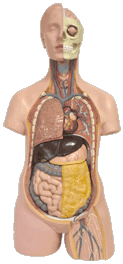At WiseGEEK, we're committed to delivering accurate, trustworthy information. Our expert-authored content is rigorously fact-checked and sourced from credible authorities. Discover how we uphold the highest standards in providing you with reliable knowledge.
What is Trichiasis?
Trichiasis is a term referring to in-growing eyelashes or eyelashes that grow toward the eye instead growing away from them. This might affect a single lash or several lashes, and the condition can occur for a number of different reasons. People may not know they have trichiasis but they may feel constant irritation as lashes that point into the eyes touch it continuously.
As previously stated, trichiasis may result under a number of different circumstances. In rare instances people have a condition called distichiasis. This means they have a full second set of lashes, which instead of turning outward, grow into the eye. Other potential causes of in-growing lashes include if people have swelling in the eyelids that results in failure for one or more lashes to grow in the ordinary way. This might occur due to additional eye conditions or due to injuries to the eyes. In fact burning of the eyelid, or any other injury to the lid might change eyelash growth pattern and result in trichiasis.

The most common symptoms of this disorder are persistent eye irritation in the affected eye. Since the lash/lashes can be constantly in contact with the eyeball, it can feel like allergic eyes or create the sensation that something is in the eyes. People frequently have red eyes or produce extra tears when they have trichiasis.
It is not advised that people ignore these symptoms. Over time eye irritation may create changes in the eye. Some people develop ulcerations on the eyeball as a result of one or more lashes continually brushing against it.
As uncomfortable and possibly annoying as this condition can be, it may be short-lived if people get appropriate treatment. There are three strategies that might be suggested for treatment. If trichiasis has not resulted from some form of defect or condition like distichiasis, and just involves one lash, that lash might simply be plucked. This method, called epilation, is sometimes fully successful, but not always. Should there be concern about the eyelash repeating the same growing pattern when it grows back in, another strategy could be used.
A second method is to use electrolysis to damage hair growth so that the lash won’t regrow. While this may prove successful for a number of people, more treatment of trichiasis may be warranted if there are numerous lashes growing in the eyes. Surgical removal of lashes could then be suggested when electrolysis doesn’t work, and this could involve total lash removal or working on changing the way the lash grows so that it will grow away from the eye. With these three treatment options, most people can have successful treatment of this disorder and greatly lower their chances of it recurring. Should it recur, people should see their ophthalmologists or family doctors to discuss either repetition of treatment or other medical steps that might be taken.
AS FEATURED ON:
AS FEATURED ON:










Discuss this Article
Post your comments